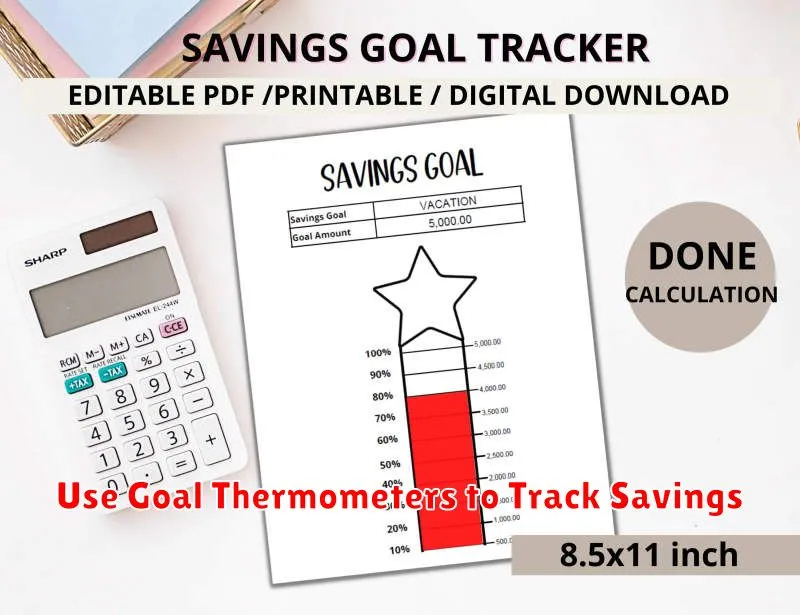Are you struggling to achieve your financial goals? Do you find yourself constantly overspending or unsure where your money is going? Learning to use visualization techniques can be a powerful tool to help you stay on track financially. This article will explore practical methods for visualizing your financial success, from creating a clear budget and tracking your spending habits to envisioning your future financial freedom. Discover how powerful visualization can transform your relationship with money and help you achieve long-term financial stability.
Why Visualization Helps Financial Habits Stick
Visualization is a powerful tool for achieving financial goals because it taps into the brain’s ability to create a strong emotional connection with desired outcomes. When you vividly imagine yourself achieving your financial aspirations – whether it’s owning a home, retiring comfortably, or paying off debt – you create a sense of anticipation and motivation.
This mental rehearsal strengthens your commitment to your financial plan. The more real and tangible your visualization, the more likely you are to take concrete steps to make it a reality. It helps transform abstract goals into something personal and achievable, boosting your confidence and perseverance.
Furthermore, visualization helps you anticipate and overcome potential obstacles. By mentally preparing for challenges, you develop resilience and strategies to navigate difficulties. This proactive approach makes setbacks less daunting and strengthens your resolve to stay on track, ultimately improving the likelihood of long-term success in your financial endeavors.
Create a Vision Board with Financial Goals

A vision board is a powerful tool for visualizing your financial aspirations. By creating a visual representation of your financial goals, you enhance your commitment and motivation.
Start by identifying your specific financial objectives. This could include anything from paying off debt to saving for a down payment on a house, or reaching a particular net worth. Be as detailed as possible; writing down exact numbers helps.
Gather images and words that represent your goals. For example, a picture of a dream house could symbolize your homeownership goal, while images of a fully-funded retirement account or a new car visually represent those aspirations. Include images that evoke positive emotions and feelings of accomplishment.
Arrange your chosen images and words on a board. You can use a physical corkboard, a digital canvas, or even a simple sheet of paper. Place your most important goals prominently. Regularly reviewing your vision board reinforces your commitment and keeps your financial goals top-of-mind.
Remember to update your vision board as you achieve milestones and as your financial goals evolve. This dynamic approach keeps your visualization process relevant and motivating throughout your financial journey.
Use Goal Thermometers to Track Savings

Visualizing your savings goals can significantly improve your chances of success. A goal thermometer is a simple yet effective visual aid for this purpose.
Create a thermometer graphic, either digitally or on paper. Mark the bottom with your current savings and the top with your target savings amount. As you save, fill in the thermometer to visually represent your progress.
This visual representation provides a clear and motivating picture of your journey. Seeing the thermometer fill up provides a sense of accomplishment and encourages continued saving. Regularly updating your thermometer reinforces your commitment and keeps you focused on your financial goals.
The simplicity of a goal thermometer makes it accessible to anyone. It is a powerful tool to maintain motivation and track progress towards your savings target, offering a tangible representation of your financial achievements.
Set Desktop or Phone Wallpapers With Money Goals
Visualizing your financial goals is a powerful tool for staying motivated. A simple yet effective method is to set your desktop or phone wallpaper to an image representing your goals. This constant visual reminder can significantly impact your subconscious, reinforcing your commitment.
Consider using images that represent your specific financial aspirations. For example, if you’re saving for a down payment on a house, use a picture of your dream home. If you’re aiming for early retirement, use an image that embodies your vision of that lifestyle. The key is to select an image that evokes positive emotions and inspires you to take action.
Alternatively, you can create a wallpaper with a visual representation of your financial goals, such as a chart tracking your progress or a clear statement of your target amount. The more personalized and relevant the image is to your aspirations, the more effective it will be in reinforcing your commitment and driving you towards success.
Remember to regularly update your wallpaper as you progress towards your goals. This reinforces your accomplishments and keeps your motivation high. The act of changing the wallpaper itself can be a small but rewarding step in your journey.
Write Future-Focused Affirmations Daily
Affirmations are powerful tools for rewiring your subconscious mind and manifesting your financial goals. Daily repetition of positive statements about your financial future can significantly impact your mindset and actions.
Focus on future-oriented statements. Instead of saying “I am struggling financially,” try “I am attracting abundance and wealth into my life.” Or, instead of “I can’t afford that,” affirm “I am financially secure and can afford everything I need and desire.”
Make your affirmations specific and measurable. Instead of a general statement like “I will be rich,” try “I will have saved $10,000 by the end of the year.” This provides clarity and allows you to track your progress.
Write your affirmations in the present tense, as if they are already true. This reinforces the belief in your mind. For example, instead of “I will be debt-free,” say “I am debt-free and financially independent.”
Use emotionally charged language. Infuse your affirmations with feeling and conviction. The more passionate you are about your affirmations, the more powerful their impact will be.
Consistency is key. Write and recite your affirmations daily, ideally at the same time each day to build a strong habit and maximize their effectiveness.
Remember, affirmations are not a magic bullet, but a valuable tool when combined with actionable steps towards your financial goals. They work best when used in conjunction with budgeting, saving, and investing.
Visualize the Lifestyle You’re Building
Visualization is a powerful tool for achieving your financial goals. Instead of focusing solely on numbers, vividly imagine the lifestyle you desire. Detail is key: picture your dream home, the car you want to drive, and the experiences you want to enjoy. Consider the feelings associated with this lifestyle – the sense of security, freedom, and accomplishment.
This vivid mental imagery acts as a motivator, keeping you focused on your long-term objectives. When faced with financial challenges or temptations to overspend, call up this mental image of your desired lifestyle. It will reinforce your commitment and help you make choices aligned with your goals. Regularly engaging in this visualization exercise strengthens your mental connection to your financial aspirations, making them feel more tangible and achievable.
By visualizing your future lifestyle, you’re not just dreaming; you’re actively shaping your financial reality. This powerful technique provides the necessary drive and clarity to navigate the often complex path towards financial success.
Review and Update Visuals Monthly
Regularly reviewing and updating your financial visualizations is crucial for maintaining their effectiveness. Monthly is a recommended frequency, allowing for timely adjustments based on your changing financial situation.
During your monthly review, assess the accuracy of your data. Ensure all figures reflect your current income, expenses, and savings accurately. Identify any discrepancies and promptly make the necessary corrections.
Consider whether your current visualization methods are still serving your needs. If your goals or priorities have shifted, you may need to adjust your charts or graphs to better reflect your current financial focus. This may involve changing the data displayed or using different visualization techniques.
This consistent monthly update process helps ensure your visualizations remain relevant, insightful, and continue to motivate you toward your financial goals. It’s a proactive approach that prevents your visual tools from becoming outdated and ineffective.

